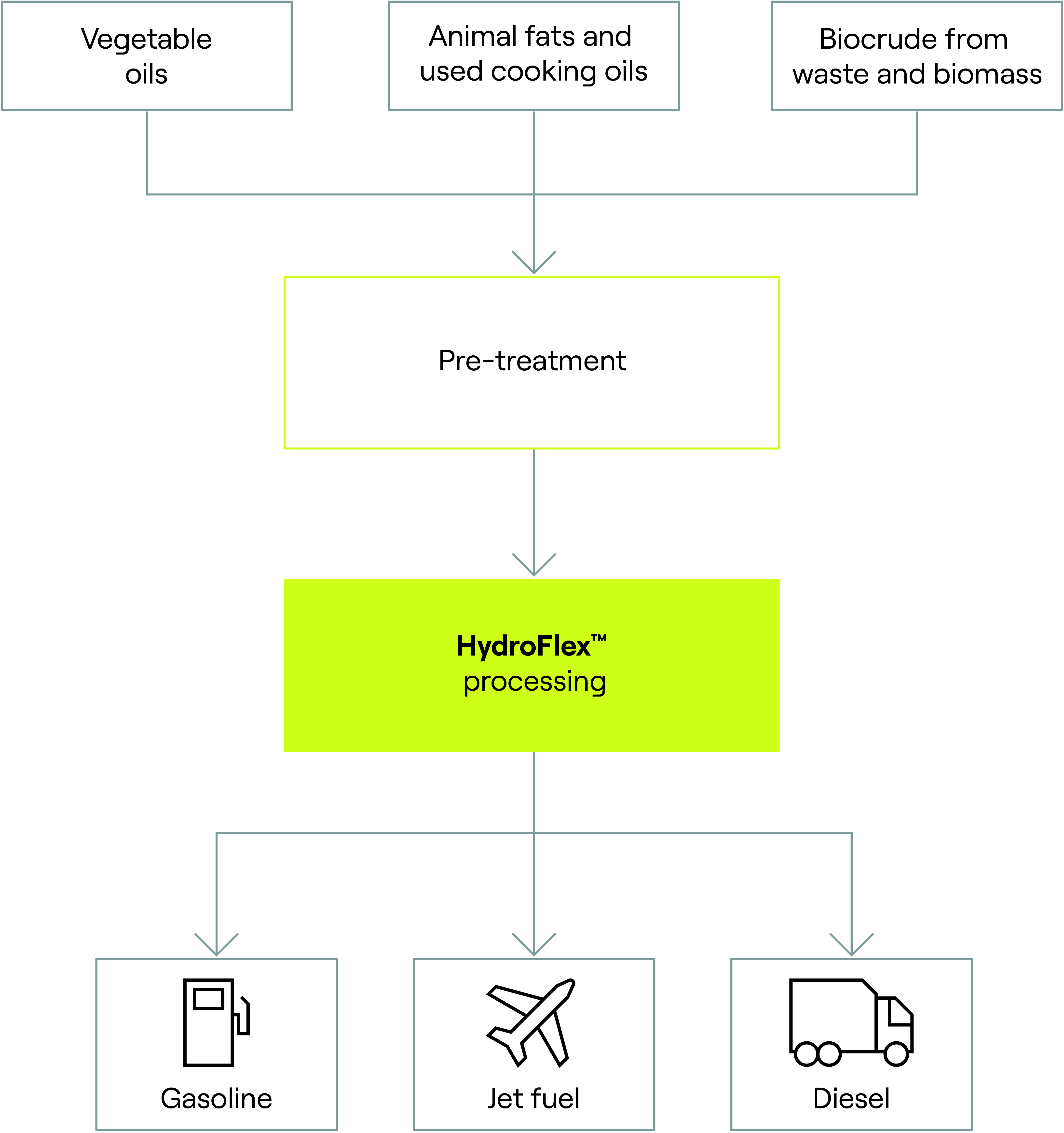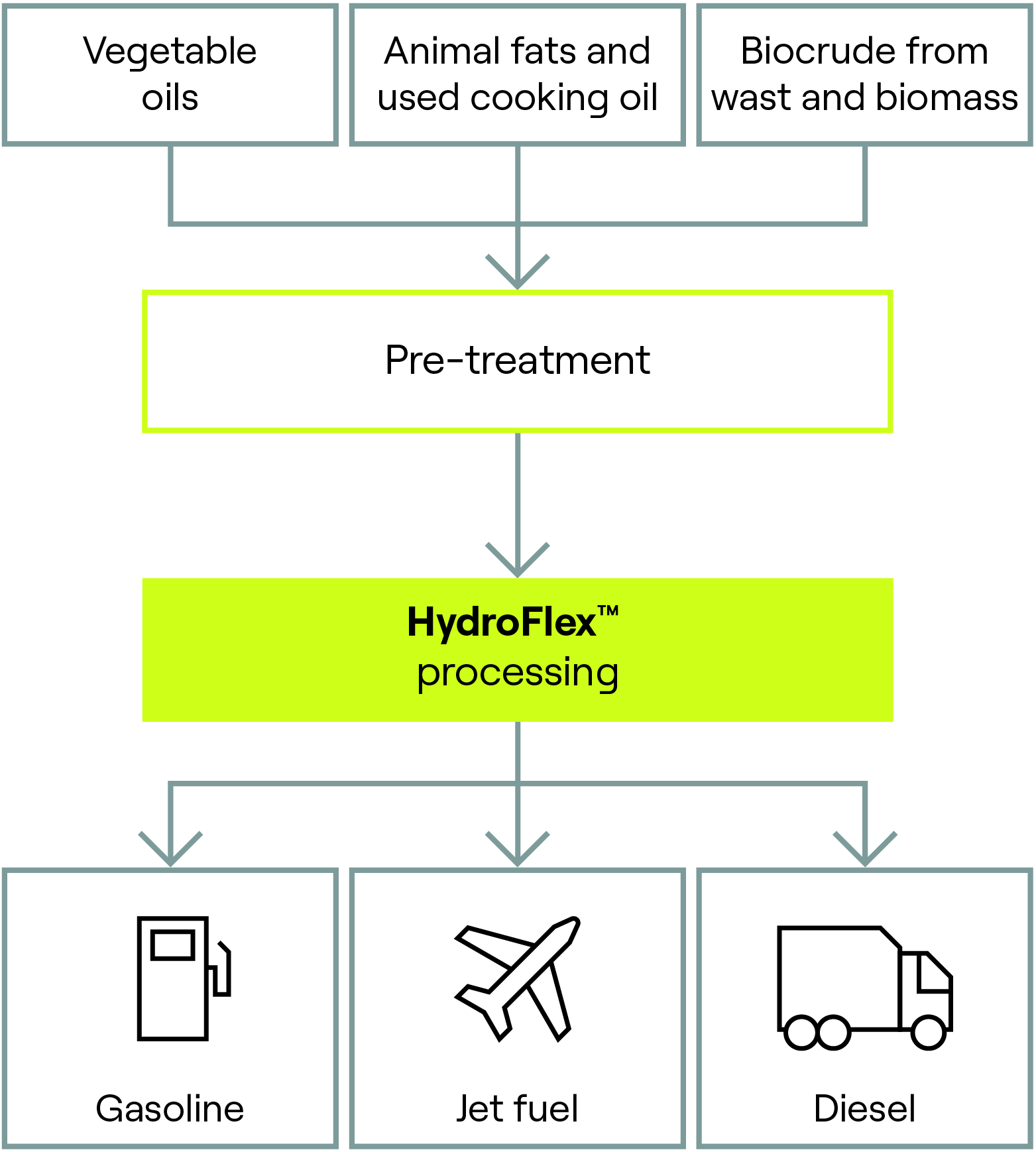Is biodiesel too risky to sustain? Get the insights to take transformative decisions
Is biodiesel too risky to sustain? Get the insights to take transformative decisions
VOICES FROM THE SKY - EXPERT PERSPECTIVES ON SUSTAINABLE AVIATION FUEL
Expand your plant and grow your business
Add full feedstock flexibility to your refinery
Get 24/7 expert guidance at hand
Discover HydroFlex™
Get the full storyGet free access to industry-leading renewables knowhow
Being a world leader in renewables comes with an obligation to share our experience, expertise, and research. In the Knowledge Center, you can find all the information you need to stay up to date with popular podcasts, in-depth whitepapers and inspiring blog articles.
Future-proof your biorefinery. With a proven process allowing for new revenue streams
Biorefineries are facing pressing challenges in the years to come. Uncertain feedstock supply, fluctuating prices and legislative blending limits are just some of the issues. But there is a way to switch challenges into opportunities. Get the insights and see how.
Preparing for the future of renewable feedstocks
The insight gained through external research collaborations enables us to understand the feedstocks of tomorrow and optimize our own technology and catalysts to accommodate new demands. We are convinced that whatever the feedstock, liquid or solid, we will be able to assist our customers in the most optimal way possible.
Access to industry-leading
renewables knowhow
Our sour mode single stage design is the only renewable processing complex with an integrated hydrogen unit. More to the point, it can save you up to 35% of the CAPEX. This is just one example of the knowhow in our extensive HydroFlex™ portfolio which can give your business renewable feedstock capability – and the opportunity for growth.
Four options for greater market share and profitability
According to the IEA (International Energy Agency), 5% of today’s global energy consumption is fueled by renewable sources. The IEA estimates this will rise to 25% by 2060. That adds up to an incredible opportunity for business growth.
Legislation creates opportunities for greater market share
There is clearly a trend to apply legislation to reduce emissions. Not only is this trend global, with potentially far-reaching repercussions for the refinery industry, it’s also rapid. Once one law is passed, it seems the next one is already being drafted.
Converting waste to fuel with HydroFlex™
Tires, plastic, and municipal solid waste may seem useless, but in reality, this waste makes up one of the world’s most undervalued and forgotten resources. Transform industrial waste into a valuable resource with Hydroflex™, the reliable way to add full feedstock flexibility to your refinery.
The Fuel for Thought Podcast
The world’s first podcast about renewables for the refinery industry. Sylvain Verdier and Mikala Grubb from Topsoe, look into some of the most pressing topics in renewables and the refining industry, including new legislation and its impact, emerging technologies and current market drivers and trends.
Full feedstock flexibility


Renewable feedstocks
Processing renewable feedstocks is complex. The range of feedstocks is extremely wide, and they can be processed in many different ways. Because of this diversity, unit design is crucial – as is selecting and loading the right catalysts. But no matter what feedstock you choose, with HydroFlex™ technology the result will be consistently high-grade fuel.
Diesel from renewable feedstocks
With HydroFlex™, your renewable diesel will meet all ASTM 975 and EN 590 specifications. Because of its high cetane number and low sulphur content, you can blend it with lower-grade fossil diesel so it complies with today’s ever-tightening legislation.
HVO-100 diesel
With HydroFlex™ you can turn almost any feedstock into high-grade HVO-100 diesel. What’s more, blending HVO-100 diesel with fossil diesel decreases sulphur content and raises the cetane number. So you can meet today’s legislative and market demands for clean diesel.
Jet fuel from renewable feedstocks
Expand your refinery business with HydroFlex™ and you’ll be able to convert renewable feedstocks into drop-in, ultra-low sulfur jet fuel. Our proven system gives you total feedstock flexibility. So you can future-proof your refinery against today’s changing legislative and market demands.
Naphtha from renewable feedstocks
Renewable naphtha is an intermediary product that converts to gasoline, plastics, or feedstock for hydrogen production– and it is a byproduct that refineries already produce when they convert renewable feedstock into diesel. The demand for non-fossil feedstocks is increasing. With Naphtha, refiners can make every drop count.